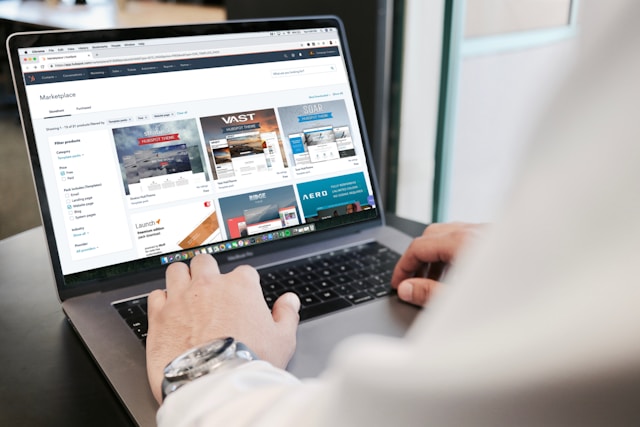
Photo by Campaign Creators on Unsplash
In this article, you’ll learn how to find the perfect balance between affordability and top-notch web design. Read on for web development project ideas and tricks to make smarter decisions!
Define Your Objectives and Priorities
Before you start the web design process, take the time to define your objectives. What do you want your website to achieve? Is it to attract new customers, sell products online, or provide information to your target audience? Knowing your goals will help you make informed decisions about where to allocate your budget.
Once you have your objectives, prioritize them wisely. Identify the elements that are most critical to your business and focus on them first. This will help you focus your resources on what truly matters, ensuring you don’t overspend on features that won’t affect your success.
If you don’t have enough capital for a quality website that meets your core objectives, consider looking for a small business loan or exploring alternative financing options. Research various financing institutions and online lenders to find the best rates and repayment options.
Scrutinize their websites, read client reviews and testimonials, and evaluate their lending terms. For instance, if you plan on taking up a loan with Credibly, visit https://www.credibly.com/ to explore their small business financing options.
However, be cautious about taking on debt. Before pursuing this route, carefully evaluate whether the potential return on investment from a higher-quality website justifies the cost of borrowing.
Choose the Right Partners
The partners you choose can have a big impact on both the cost and quality of your project. While it might be tempting to go with the cheapest option, it could backfire if the quality isn’t up to par. Instead, look for web designers with a strong portfolio, positive client reviews, and a clear understanding of your business needs.
Working with IT support can also be helpful when balancing cost and quality in your web design projects. They can provide valuable insights on technical aspects and help with website optimization, security, and ongoing maintenance.
When looking for an IT services provider, find a partner that prioritizes your needs and business goals. After all, “A dynamic team with forward-thinking solutions will ensure your tech investment supports your business and works the way you need it to,” says the CEO of CausMX.
The bottom line? When evaluating potential partners, consider both the cost and value they bring to the table. A more expansive team may offer insights and expertise that lead to a higher-quality website, which could save you money in the long run.
Plan Your Budget Wisely
Effective budgeting is also critical. Start by determining how much you can afford to spend on your web development projects. Be realistic about your financial constraints, but also keep in mind that a well-designed website is an investment in your business’s future.
Once you have a budget in mind, break it down into categories such as design, development, content creation, and ongoing maintenance. This will give you a clear picture of where your money will go and help you adjust as needed. Remember to allocate funds for unexpected expenses, as they often arise during a website project.
Consider Using Templates or Pre-Built Themes
If you’re on a tight budget, consider using a website template or pre-built theme. These options can be much more affordable than custom design while still offering a professional look. The good thing is that many platforms, like WordPress, provide a wide range of customizable themes you can tailor to fit your brand.
But be mindful of these templates’ limitations. While they can save you money upfront, they may not offer the same level of customizable design. If your needs are complex or if you require a highly unique design, investing in a custom solution might be worth the extra cost.
Plan for Future Growth
When balancing cost and quality, it’s crucial to think long-term. Your website should be scalable, allowing you to add new features and content as your business grows. While this might require a larger initial investment, it can save you money in the long run by reducing the need for a complete redesign as your needs evolve.
For effective planning, discuss your plans with your famous website designers and ensure that the site’s architecture can accommodate growth. This foresight will help you avoid costly changes down the road and ensure that your website remains effective as your business expands.
Focus on Essential Features
It’s easy to get carried away with non-essential features, but every additional feature comes with a cost. To keep your project within budget, focus on the crucial aspects that will deliver the most value to your users.
For instance, a user-friendly navigation system, fast-loading web page times, and mobile responsiveness enhance the user experience. On the other hand, features like animated graphics or complex interactions, while visually appealing, may not be necessary for your website’s core functionality.
In as much as you want to make your website visually appealing, prioritizing essentials ensures that your budget is spent wisely on what matters most. So, pinpoint the most vital features you want to highlight and prioritize them.
Conclusion
Balancing cost and quality in your web design project can be challenging. But by following these tips, you can create a beautiful and practical website without breaking the bank. Remember, a well-designed website is an investment in your business’s future, so it’s worth taking the time to get it right. With thoughtful planning and smart decisions, you can achieve a high-quality and cost-effective website, setting your business up for success in the digital world.
